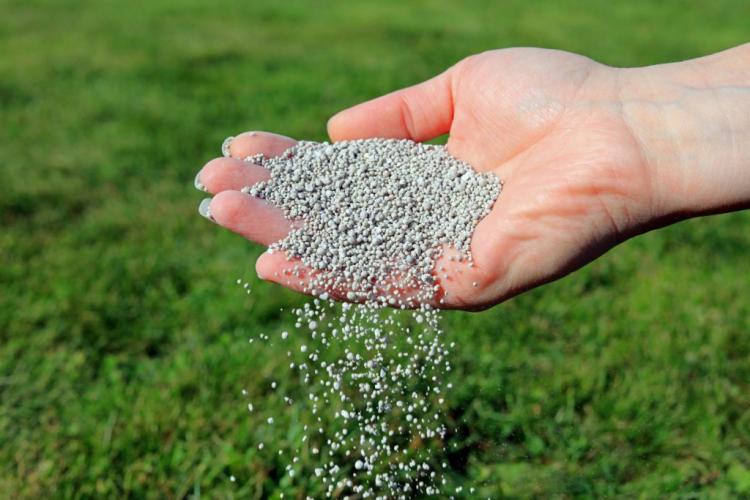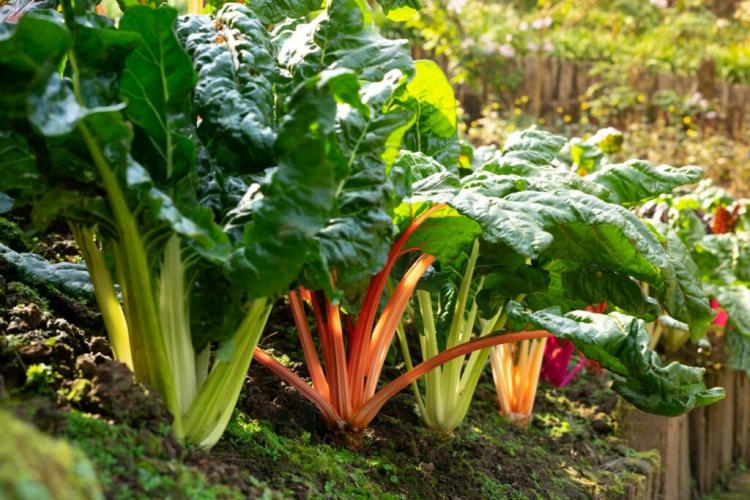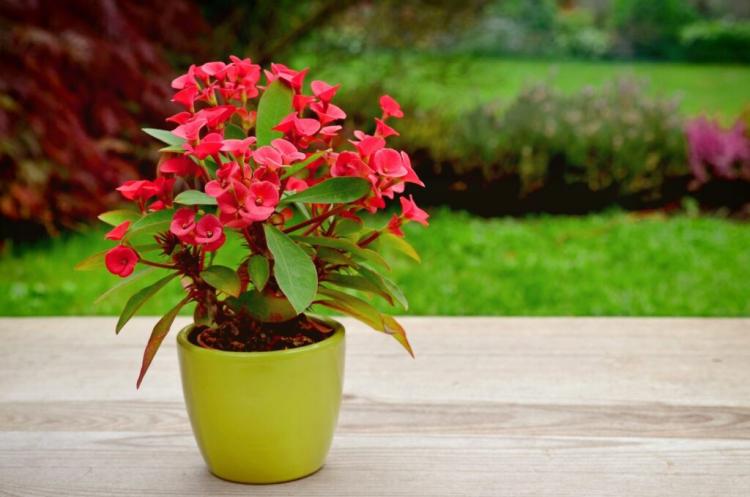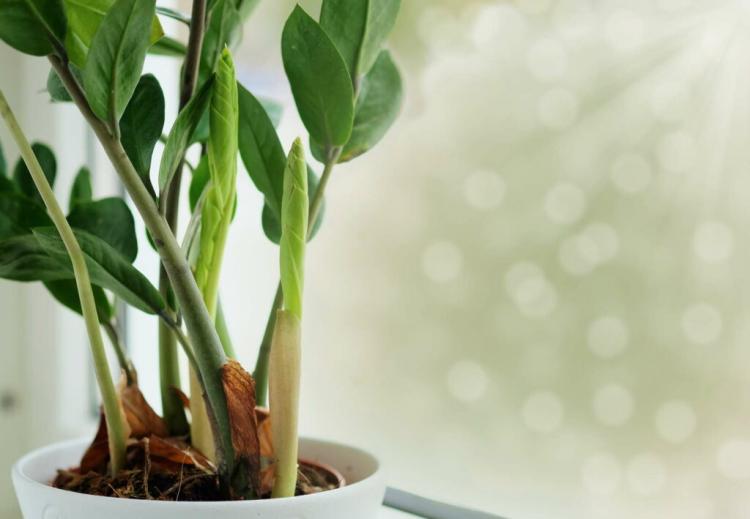Tomatoes Protect From Disease
Tomato plants should not be missing in any garden. Diseases can spoil the harvest. With these tips, nothing stands in the way of a successful harvest.
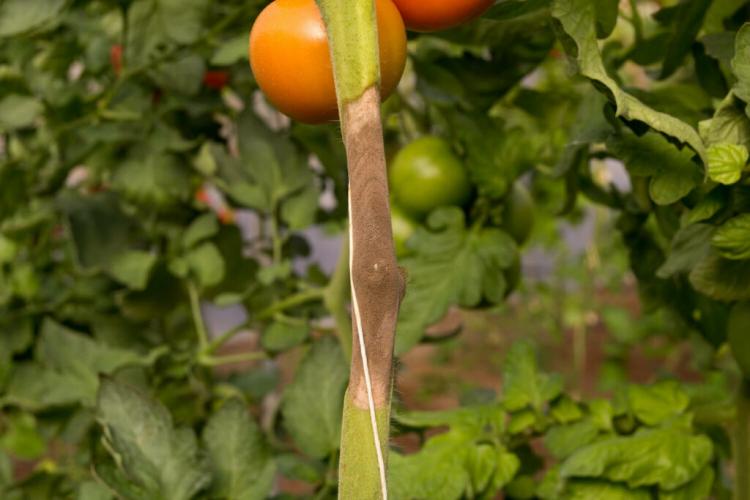
Gray mold infects the tomato tissue and causes it to decompose [Photo: AJCespedes / Shutterstock.com]
Many gardeners believe that tomato disease can only be avoided by using the chemical club or new F1 varieties. We show in this article that this is not true!
Fungal diseases in tomatoes
Table of Contents
It is important that even as a hobby gardener you have a good overview of the tomato antagonists. Only in this way is it relatively easy to detect an infestation at an early stage or to prevent it immediately. Fungal diseases, for example, are a major problem when growing tomatoes.
Late blight and brown rot in tomatoes
In most cases it is likely to be an infestation of tomato-leaf blight and brown rot. This disease is caused by a fungus ( Phytophthora infestans ) and mostly occurs when the culture conditions are too humid.
- Symptoms:
In midsummer, usually shortly before harvest, the leaves wither first, followed by the browning of the tomato fruits. As the name of the disease suggests, infected fruits look rotten.
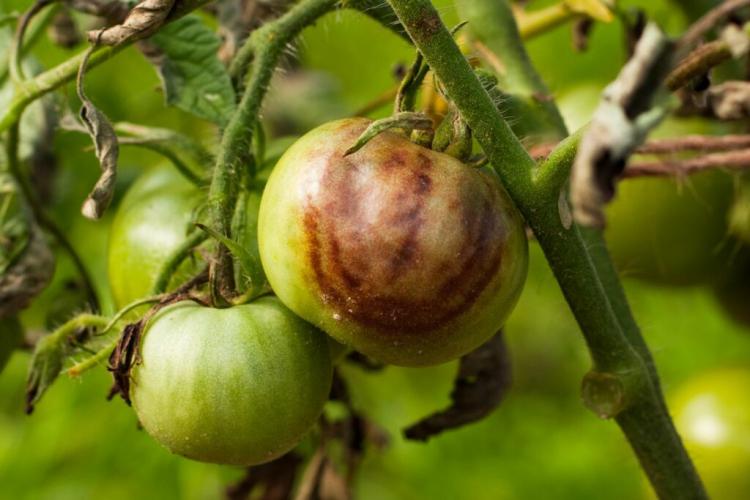
Brown rot can affect the fruit as well as the leaves and stems of the tomato [Photo: Elena Masiutkina / Shutterstock.com]
- Prevention:
The fungal spores often lie loosely on the ground, so splashes of water can transfer the spores to the lower leaves and fruits. If the cultivation conditions are humid (rainy summer, poorly ventilated greenhouse) the fungus can spread quickly and tear the entire plant away within a few weeks. For prevention, tolerant varieties can be sown / planted on the one hand, or the plant can be protected from rain with a tomato roof. If used plant sticks are used, they should be thoroughly disinfected so that possible fungal residues from the previous year do not attack the young plants. Tomato plants should also be watered directly at the root area. Wetting the leaves with water can massively promote the fungal infection. In addition, tomatoes should be planted at a considerable distance from potatoes. If your tomato plant has already formed many leaves, you should remove the bottom leaves on the ground. This will prevent contact between the wet soil and the leaves. If the leaves of the tomato touch the wet ground for a longer period of time, the infestation with late blight and brown rot is virtually inevitable.
ATTENTION: Especially without a rain cover, we consider the often recommended pruning to be counterproductive. The tomato is injured when preening. The wound site is a gateway for all kinds of diseases. If you should still max out the side shoots, then please only carry out this work step in dry weather. - Treatment:
If you recognize the infestation, you can usually only contain it. Infested parts of the plant cannot recover and should be removed immediately and disposed of with residual waste. A copper preparation (e.g. funguran) or another fungicide can also be sprayed (preventively) to contain the infestation. Biological alternatives are also available. After all, you don't want to have any residues of the spray in your food. Here you can either make a broth made from rhubarb leaves or use a commercial product such as Neudovital.
The following resistant tomato varieties have proven themselves in our garden:
- ' Primavera ': Bright orange-red fruits that are burst-resistant and particularly juicy and fruity. Good resistance to late blight and brown rot.
- 'Phantasia': F1 hybrid for open field and greenhouse. Natural, high resistance to brown rot.
- 'Pyros': F1 hybrid beefsteak tomato. Highly tolerant variety against late blight and brown rot. Pleasantly spicy and fruity pulp.
Gray mold rot in tomatoes
This rot, which often occurs in tomatoes, is also caused by a fungus ( Botrytis cinerea ). The transmission takes place mostly through wind or splash water. The fungus has an easy time of it, especially in damp and wet climates, with dense stands or weakened plants.
- Symptoms:
This type of fungus can attack any part of the tomato. First, the fungus forms brown spots, which, especially in warm, humid weather, quickly expand into a large, area-wide, gray patch of mold. If you don't act fast enough, the entire plant will die within a short time.

The brown and late blight has different faces depending on the stage [Photo: Radovan1 / Shutterstock.com]
- Prevention:
Plants shouldn't stand too closely, otherwise the plants worry about lack of light and also dry off more slowly after rain showers. A certain amount of air draft should be ensured between the plants.
As already mentioned with late blight and brown rot, tomatoes must be carefully watered in the root area. The leaves of the tomato plant must not be wetted.
You should also be careful when fertilizing tomatoes. Even if the nightshade plant is one of the heavy consumers, over-fertilization with nitrogen weakens the resistance to fungal diseases.
Even if many gardeners still regularly exhaust their tomatoes, one should know that diseases can more easily penetrate the plant at these sore spots. It should only be shown when cultivated in a greenhouse or under a tomato roof. In our experience, if the plants are not protected from rain showers, they should not be exhausted. Here it is more advisable to increase the root mass (when planting out, place the plant horizontally in the earth and tie the upper third of the shoot in the vertical) so that the additional stinging shoots can be supplied with sufficient nutrients. - Treatment:
In the early stages, the affected parts of the plant should be removed generously. The clippings must be disposed of in the residual waste and must not end up on the compost heap. The remaining tomato plant should then be as sunny and airy as possible. If possible, you should try to protect the plant from precipitation with a rain cover / roof.
If the ripeness of the tomatoes is still a few weeks away, you can also consider using a fungicide to prevent further infestation. In any case, follow the instructions for use, which indicates which waiting times must be observed. In addition, the plant can be strengthened with some home remedies. Here, for example, a horsetail extract is ideal.
Leaf spot disease
A fungus (Septoria lycopersici ) is also up to mischief in this somewhat less common disease. Tomatoes are often only affected when celery grows in the neighborhood, as this is quite often attacked.
- Symptoms:
Symptoms of this fungal disease are watery spots (mostly on the lower, older leaves) that are dark in color. An outer ring separates the spots from the still healthy leaf. This also turns yellow after a short time. The leaf dies in a row. In the advanced stage, the so-called spore containers can also be seen on the underside of the leaves.
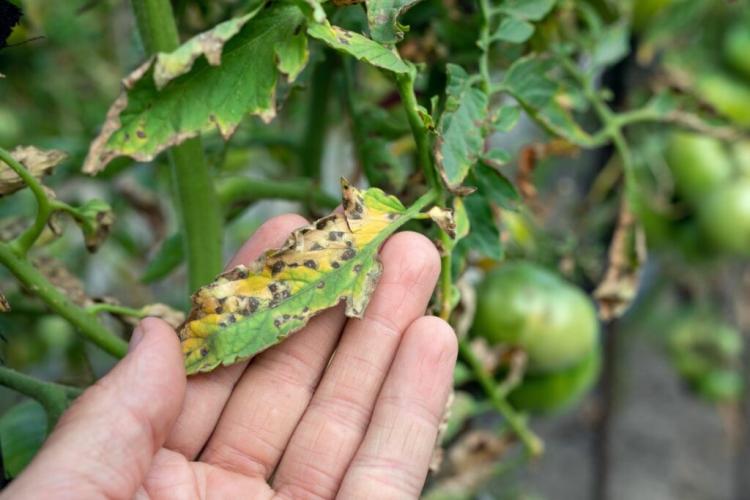
Here you can see the infestation of tomatoes with the leaf spot disease Septoria [photo. Olya Maximenko / Shutterstock.com]
- Prevention and control :
As with most other fungal diseases, damp and wet weather is a great advantage for fungal infestation. Tomato plants should be as dry and airy as possible and not be wetted with water when watering. Ideally, you pour carefully in the root area.
Leaf spot disease in tomatoes is far less severe than the two diseases mentioned above. Dispose of infected leaves quickly in the residual waste.
Most of the time, an infestation weakens the plant and results in a smaller harvest. A complete failure due to leaf spot disease is extremely rare in tomatoes. To prevent the fungus from spreading further in bad weather, you can work with a plant protection agent and a plant strengthener (e.g. horsetail extract).
Powdery mildew in tomatoes
This fungus ( Oidium lycopersicum ) can usually only be found in tomatoes when grown in a greenhouse. Powdery mildew isn't nicknamed “fair weather mushroom” for nothing. It thrives especially in long periods of good weather and drought. Prevention is the best way to combat this fungus. Water regularly and make sure that the greenhouse is not bone dry. In the event of an infestation, you can usually safely leave a pesticide in the cupboard. The infected leaves can be removed. If the infestation is a little stronger, Neudovital can also be sprayed, for example.

This tomato leaf is infected with powdery mildew [Photo: Taew Jari / Shutterstock.com]
Drought spot disease in tomatoes
The fungus ( Alternaria solani ) causes dry spot disease. This is particularly evident in the fruits. These are sometimes putrid. As a result, white mold forms with black spores in the final stage. The foliage of infested plants should be kept as dry as possible. Infested fruits must be removed and disposed of in the residual waste before the spores can spread further. In general, the crop rotation must be adhered to with tomatoes. As a preventive measure, you can strengthen the plant with horsetail extract or use a pesticide. The mixed culture with cruciferous vegetables (various types of cabbage) and carrots is also recommended.
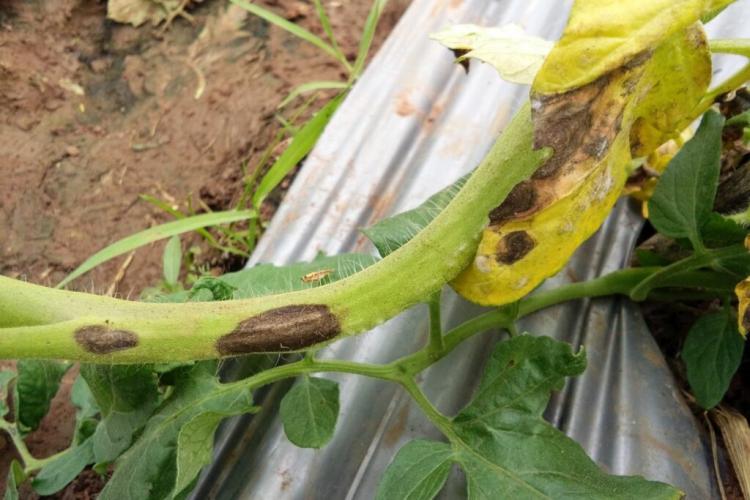
The dry spot disease is similar to the brown rot [Photo: AmBNPHOTO / Shutterstock.com]
Velvet spots and brown spots in tomatoes
This tomato disease is only known to gardeners who have enjoyed a greenhouse. Because the velvet and brown stain disease only occurs when cultivated in a greenhouse. Cladosporium fulvum , a fungus, causes this disease.
- Symptoms:
As a symptom, yellowish spots appear on the upper side of the leaf. These turn brownish as the disease progresses and lead to the death of the infected leaf. A velvety fungal fluff forms on the underside, from which the spore beds develop later.

The fungus spreads through spores in the tomato stand [Photo: Algirdas Gelazius / Shutterstock.com]
- Prevention:
Damp leaves and a high level of humidity promote an infestation with the velvet stain disease. Therefore, plants should be watered carefully in the root area. Under no circumstances should the leaves be wetted with water. Adequate ventilation must also be ensured. We therefore recommend greenhouses with sufficient height and numerous ventilation options. It is also important that the plants are not too close together and that air can circulate between the plants. Thinning out the tomatoes can also be useful. - Treatment:
Velvet spot disease has been on the rise for a few years and is spreading very quickly. Since it is difficult to control the fungus with biological pesticides, one must pay attention to prevention. The velvet stain should not be underestimated. Once it has spread in the greenhouse, it becomes difficult to permanently eliminate the pathogen. If you recognize an infestation, you have to act quickly. Infested plant parts should be cut out over a large area and disposed of with the residual waste. In order to prevent jumping onto other parts of the plant or other plants, a fungicide should be used as a precaution. The velvet stain should not be underestimated. Once it has spread in the greenhouse, it becomes difficult to permanently eliminate the pathogen.
Wilt fungi on tomatoes
Wilt fungi ( Fusarium, Verticillium, Pythium , etc.) are feared in commercial fruit, grain and vegetable cultivation.
- Symptoms:
Symptoms vary depending on the type of fungus: Fusarium fungi usually spread upwards from the lower leaves. The plant dies after about two weeks. Verticillium mostly only affects other nightshade plants such as peppers and chilli. In our opinion, however, the fungus could spread to neighboring tomato plants. Pythium shows up in the upper root area. This fungus massively weakens older plants and can lead to death in younger specimens.
Risk of confusion: A bacterial infestation with (Corynebacterium michiganense , Clavibacter michiganensis) can lead to the typical wilting phenomenon.
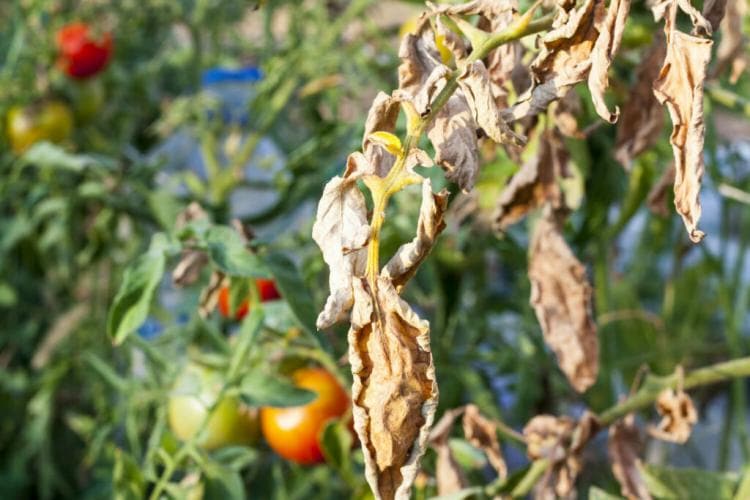
Fusarium wilt often only becomes visible on one side of the tomato plant [Photo: Mironmax Studio / Shutterstock.com]
- Prevention:
Preventive measures in particular are essential. The culture conditions should not be too humid. This applies to both the air humidity and the wetting of above-ground parts of plants with irrigation water. Over-fertilization with nitrogen must also be avoided. The crop rotation must be strictly observed, as many wilt fungi are soil-borne diseases and can survive in the soil for several years. If you already had a fungal attack in the previous year, you should definitely use more modern and resistant varieties. - Treatment:
Destroy the plant and, if possible, remove the upper layer of soil and also dispose of it in the residual waste. Calcium cyanamide is then worked into the soil. Immediately afterwards, all gardening tools used should be disinfected (shovel, scissors, etc.). In addition, Phacelia (colloquially also known as bee pasture or bee friend) can be planted for soil treatment in the post-crop. No plants from the same family should be grown at the affected location for the next 5 years (pay attention to crop rotation!). So that the pathogens in the soil can be broken down, a healthy soil life is a great advantage. The introduction of compost or green manure promotes life in the soil.
Viral diseases
In addition to fungal diseases, the following viruses also cause problems for tomatoes.
Tomato and pepper mosaic virus
Two types of virus in particular are known here. The tobacco mosaic virus, which was once feared in tobacco growing, can also attack nightshade plants such as tomatoes, peppers / chilli and aubergines. An infestation usually manifests itself on the tomato fruits. Brownish rings are formed here. The pulp hardens and does not become soft even when fully ripe. Apart from plant strengthening, there is relatively little that can be done against the infestation. Infested plants and fruits should be disposed of with household waste as quickly as possible. If the infestation occurs more frequently in your own garden, you should use newer tomato varieties that are resistant to the mosaic virus.
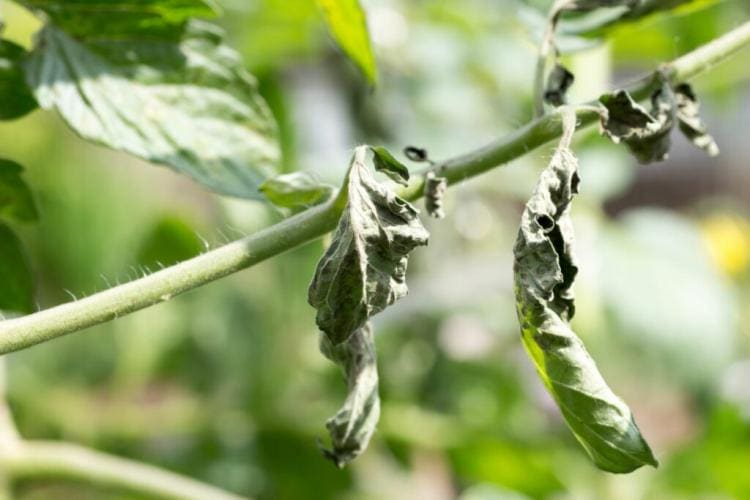
This tomato leaf shows the infection with a mosaic virus [Photo: Miyuki Satake / Shutterstock.com]
Another strain of the mosaic virus leaps from peppers or chillies. Especially when peppers and the like are cultivated together with tomatoes, these plants must be checked regularly for aphid infestation. Because this pest transmits the virus when it is sucked. If you fight the lice, the viral disease usually doesn't stand a chance either. Beneficial insects can also be used against aphids. Read more about this in our article Beneficial insects in tomatoes.
Tip: You can find out how you can identify and prevent other environmental and physiological damage to tomatoes in our special article
Blossom end rot: when tomatoes rot
A less critical disease is flower end rot. Especially with large-fruited tomatoes (oxheart and beefsteak tomatoes), an unsightly discoloration forms on the underside of the fruit. The fruit contracts slightly inwards as the stage progresses. This problem occurs due to a calcium deficiency and can therefore be easily remedied. A soil rich in nutrients and minerals is the basis for healthy plants. If the phenomenon does occur, it should be fertilized with a garden lime.
Not only can diseases occur in tomatoes, the plants sometimes also get pests. In this article, you will find out how to combat tomato pests such as aphids, fungus gnats and the like.


